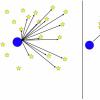AD protocol update:
I’m going to put the previous protocol with grape juice and methylene blue on hold and revert to a simplified version of an older one. A couple of commenters worried about the HEPPS dose and its stability in grape juice, and likely they are right. The results seemed fine for a couple of months, after which symptoms began returning in one individual, and after one dose of the simplified protocol shown below, the symptoms resolved within an hour. As I noted in the above post, I have another idea for using the MB/HEPPS protocol to simultaneously treat P-tau and Aβ as well as a third AD etiology, but I’m still testing it.
Plaque cocktail (dose):
● Taurine (5 g)
● HEPPS (500 mg)
● Nicotinamide (500 mg)
● Sulforaphane glucosinolate (50 mg)
● Oleuropein (100 mg)
● Hydroxytyrosol (25 mg)
● Vitamin C (1 g)
● Glutathione, liposomal or phytosomal (1 g)
Dosed as needed — once a day to once a week.
Haven’t tried HEPPS yet cause I’m still pretty young and good genotype. I have taken some head hits so focus my protocols on tau.
I think you may need to incorporate some additional chemicals to address the brain physiology this regiment will elicit. When you break up a plaque, it won’t go straight from fibril to monomer. The plaque will transiently be an oligomer and at that instant, in theory, your brain will experience a huge molar excess of toxic species compared to when they are stabilized in fibrils and dynamically forming smaller concentrations of oligomers.
I would recommend a pretreatment with AHCC, lions mane, autophagy inducers before disrupting the plaques, My theory is to prime my brain to respond to the transient extreme increase in concentration of toxic species of tau, promote neurotrophic signaling, autophagy, and immune system to chomp up the prions first.
From what I’ve read about tau it seems to be phosphorylated allll over the place. One thing I am starting to take into consideration is dosing with one tau disrupted at a time. That is, some anti tau intercalators may be more effective in an aggregate of a specific species of phosphorylations. Theory is that if you hit it with methylene blue or anti tau compound x, you affect all the plaques in your brain differently. I look at it like plaques developing antibiotic resistance so you can hit them with various disrupters in succession alternating, before a bad phosphorylation profile takes hold.





























































